 Do you want to make money from your YouTube content?
Do you want to make money from your YouTube content?
Have you thought about working with a sponsor?
A video sponsorship is an excellent way for YouTube channels to generate supplemental revenue outside of AdSense.
In this article, you’ll discover five ways YouTube creators can earn money with video sponsorships.
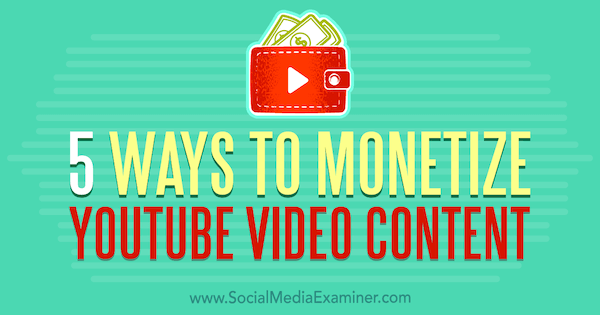
Plug or Mention the Sponsor in Your Video
Video plugs and mentions are the most common type of sponsorship integration on YouTube. As the channel host, you introduce the brand to your audience. Depending on the sponsorship agreement, you may also include additional details about the brand, share promotions, and talk about or show the product/service.
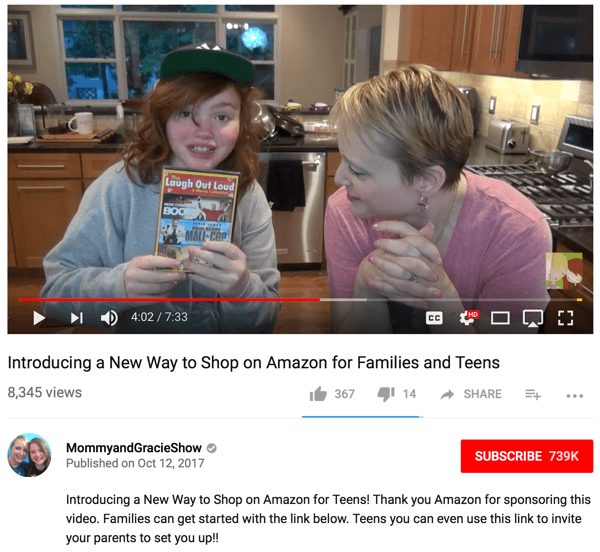
Plugs are usually included in timely content such as vlog (video log) posts. In this case, time-sensitive offers perform well in mentions. Although the bulk of the plug's success will come up front, the content will remain indexed on YouTube and there will be audience members who watch it at a later time.
When it comes to plugs and mentions, there are also a number of subtypes, as detailed below.
#1: Reveal Products via Haul Inclusion
This type of mention is most common with YouTube creators in the fashion vertical. The channel host will show the clothing items they brought back from their latest shopping trip and talk about those items, as well as the sponsored product.
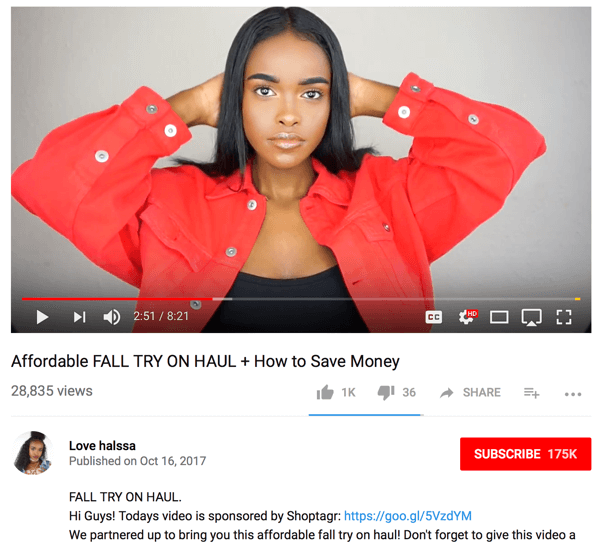
#2: Show Off Products via Routine Inclusion
This mention takes place when the host demonstrates how they do something, such as start the day or prepare for a workout. The host will seamlessly add the sponsored product into the routine with some positive talking points.
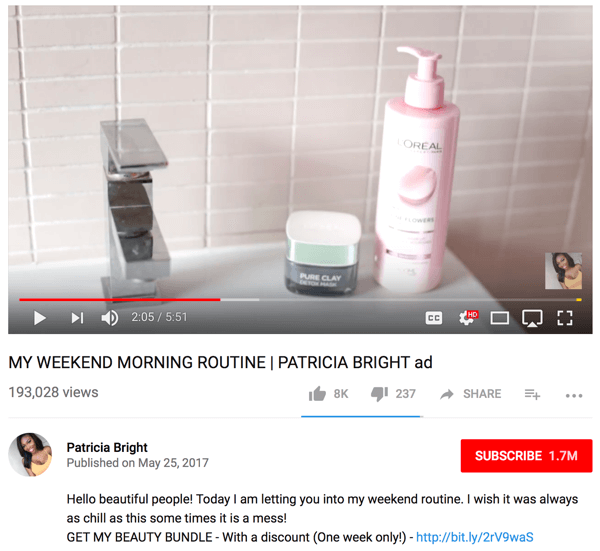
#3: Mention Products in Pre-Roll, Mid-Roll, or End-Roll Segments
These mention types are the most typical. The channel host will cover a product or service in a separate segment from the video's main content at the beginning (pre-roll), middle (mid-roll), or end (end-roll) of their video.
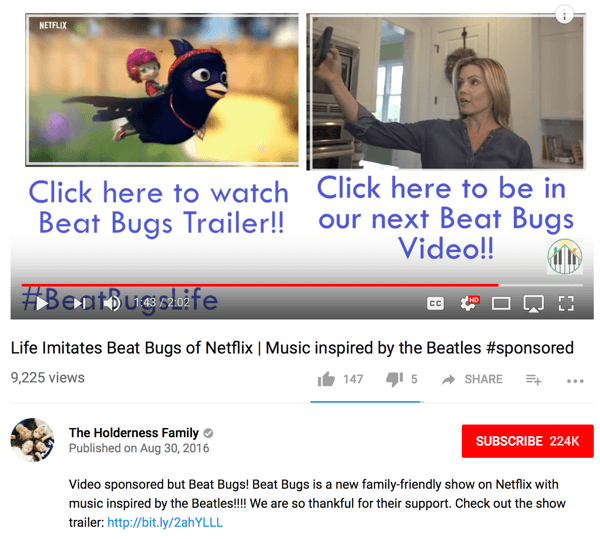
Integrate the Sponsor Into Your Video
Dedicated videos are completely focused on the sponsor or intended to be evergreen by featuring creative input with the brand's products. Here are the different types of dedicated videos:
#4: Provide Product Reviews
If the brand has a product that's new to the market, sponsoring a review video is a great way to raise awareness. Technology-related brands facing fierce competition frequently use review videos. Consumers often base their purchasing decisions on the opinions of trusted YouTube channels.
Review videos are extremely effective in the long run because consumers who search for “[brand's product] review” on Google or YouTube (the second-largest search engine) will come across the videos the brand sponsored.
Get World-Class Marketing Training — All Year Long!
Are you facing doubt, uncertainty, or overwhelm? The Social Media Marketing Society can help.
Each month, you’ll receive training from trusted marketing experts, covering everything from AI to organic social marketing. When you join, you’ll also get immediate access to:
- A library of 100+ marketing trainings
- A community of like-minded marketers
- Monthly online community meetups
- Relevant news and trends updates
Sponsoring your YouTube channel doesn't purchase bias, however. If you try a product and don't believe it earns your endorsement, you should give the brand the option not to have the video made. You should negotiate this arrangement up front.
For example, the brand might allow you to keep the product even if they decide not to publish the review. An unpublished review still outweighs the ramifications of a published negative review posted by a trusted source.

Discover Proven Marketing Strategies and Tips
Want to go even deeper with your marketing? Check out the Social Media Marketing Podcast! Publishing weekly since 2012, the Social Media Marketing Podcast helps you navigate the constantly changing marketing jungle, with expert interviews from marketing pros.
But don’t let the name fool you. This show is about a lot more than just social media marketing. With over 600 episodes and millions of downloads each year, this show has been a trusted source for marketers for well over a decade.
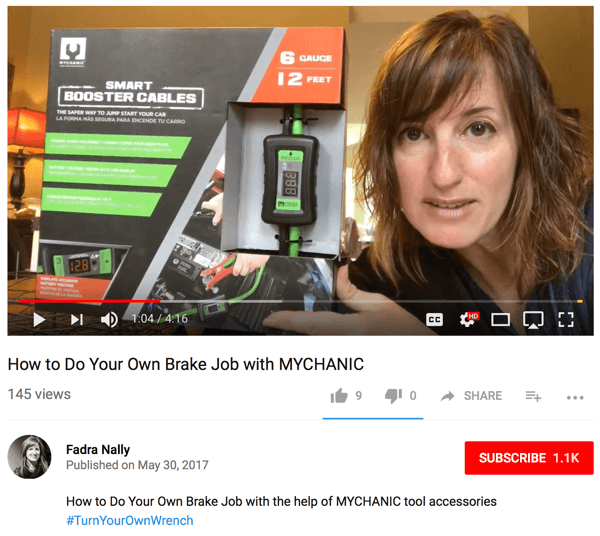
#5: Produce a Creative Dedicated Integration Series
If brands have the budget, they may want to invest in long-term branding with a dedicated video integration. In exchange for a higher fee, this option is more creative and integrated than a typical plug or review. In this situation, the creator often will give the brand more control over the video's ideation and production process.
The fees for this sponsorship type are higher than a plug or mention, but the tone of the video should be very natural and avoid phrases that are too forceful or salesy. While this strategy isn't always the best option to drive short-term sales, if executed properly, it will increase brand equity through YouTube search results for years to come.
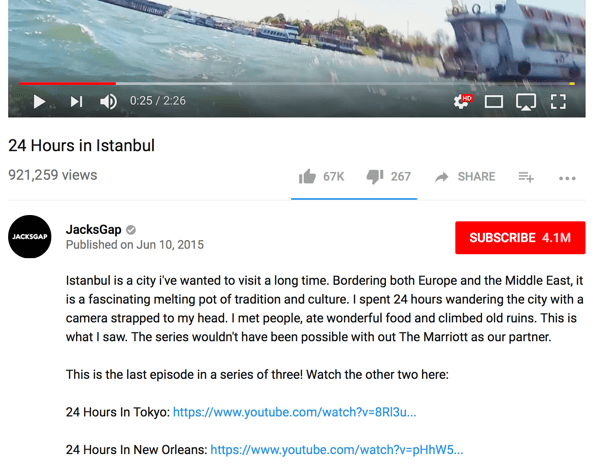
Tips for Creators to Get Started With Sponsorships
Now that you're familiar with the main types of YouTube sponsorships, here are some tips for seamlessly integrating sponsorships and pricing these opportunities.
Focus on Growing Your Channel First
If you're still getting your feet wet on YouTube, consider keeping your sponsorships to a minimum, if you do any at all. You'll still earn some money from the Google AdSense program when they're able to serve banners on and around your video, or if your videos are eligible for pre-roll ads.
Viewers understand this kind of monetization and believe that Google is responsible for these ads being there. That perception shifts greatly once a sponsorship is involved within your content and you're the person making the pitch about a certain product.
While you're up and coming, focus on putting out engaging content that your YouTube audience will love. The money will come in time, but revenue is significant only if you have a sizable audience. If you alienate your audience early on with too many sponsorships or irrelevant ad mentions, you'll miss out on much greater long-term potential because you chased short-term dollars.
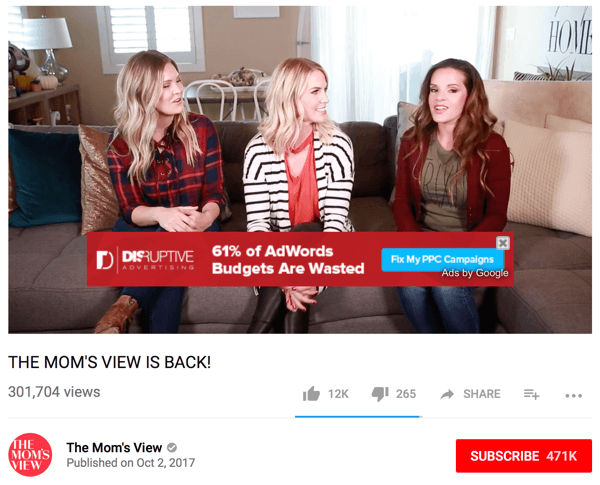
Find Sponsorships That Align With Your Channel Content
When you take on sponsorships (especially if you're a smaller YouTube channel still nurturing your audience), do the best you can to make sure the sponsor's offering aligns with the type of content that your audience associates with your channel.
For instance, if you have a channel about fashion, mentioning a fashion brand is probably a great fit in your video. However, talking about a movie theater chain would probably not be a good fit. Unaligned sponsorships feel forced and will come off as disingenuous to your audience.
Negotiate Your Rate
Advertisers are attracted to success. When you're just starting out, don't be afraid to take on smaller sponsorship deals to build a portfolio of case studies. Focus on the relevance of the offers up front as opposed to the price tag.
The most common model for pricing videos is on a flat-rate basis. Negotiate your compensation rate for mentioning the advertiser's brand in one of your videos. To determine a rate, you usually take an estimate of projected views you'll get in 30 days and multiply that by your asking cost per view (CPV).
If you're a smaller channel, lowball your view estimate and multiply that by a $0.02 – $0.025 CPV. As you grow, your projected number of views will increase. Once you're armed with case studies of success, you'll be able to ask for $0.06 to $0.09 CPV on these kinds of deals, and $0.10 to $0.25 for dedicated videos.
Want more like this? Explore YouTube for Business!
.
Summary
Video sponsorship is a great opportunity for creators to earn supplemental revenue. However, remember that your audience always comes first.
Ensure that all content, sponsored or not, aligns with your channel, and integrate sponsorships as seamlessly as possible into your videos. Overly salesy copy will alienate your audience and diminish the sponsorship's effectiveness. Modern consumers are perceptive to how genuine a YouTuber is, and a biased product review could hurt your trust.
What do you think? Have you tried a video sponsorship on YouTube? Are there any sponsorship types missing from this list? Let us know in the comments below!
Attention Agency Owners, Brand Marketers, and Consultants

Introducing the Marketing Agency Show–our newest podcast designed to explore the struggles of agency marketers.
Join show host and agency owner, Brooke Sellas, as she interviews agency marketers and digs deep into their biggest challenges. Explore topics like navigating rough economic times, leveraging AI, service diversification, client acquisition, and much more.
Just pull up your favorite podcast app, search for Marketing Agency Show and start listening. Or click the button below for more information.

